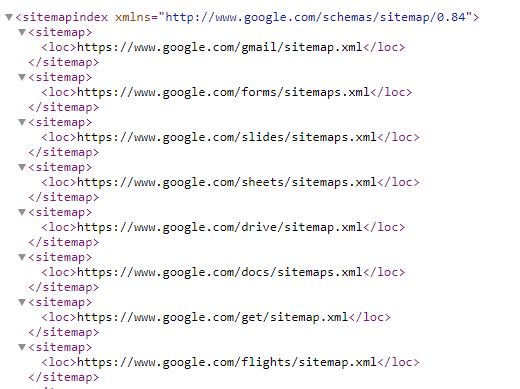
Create sitemap xml automatically
What is the sitemap of a website?
A sitemap is a list of all the pages on a website. It's an important tool for site managers and website designers. It shows users the structure of a website and can help them find specific information. It's also a good idea to have multiple versions of your sitemaps so that you can share them with different audiences.
A sitemap is a practical tool for anyone who manages websites. It's a simple way to describe the structure of a website in an easy-to-understand format. It's also a good way to keep track of ongoing development on a website. Regular sitemap updates help you keep your website running smoothly and ensure that it's easy to use. You should also create different versions of your sitemaps for clients, members of your team and other stakeholders. That way everyone can find what they want on your website easily.
It's important to keep your sitemaps up to date- especially when you're updating websites. New pages and sections of a site are easy to add and make it easier for users to find information. Plus, it's a good idea to include variants of pages in your sitemaps so that users can easily find new versions of specific pages. This allows you to quickly inform people about changes to your site without them being stuck on a particular page. You can also create an emergency version of your sitemaps that people can access if they're unable to use regular navigation menus.
It's also a good idea to have more than one version of your site map for different audiences. For example, you could have an easy version for clients and members of your team and a more complex version for search engine bots. This way no one has a hard time navigating your website when searching for information. Plus, setting up different versions allows you to test new functionality on specific groups of people before implementing it across the board. This way you can make sure that new features work as intended before using them on all users.
A sitemap is an essential tool for anyone who manages websites or uses web browsers regularly. Regular site map updates help you manage ongoing projects and keep your website accessible to users. Additionally, having multiple versions helps you inform various groups about your website efficiently. A well-designed webpage is useless if no one can find anything on it!
Elements that an XML Sitemap must have
A sitemap must be in XML format and must have the name sitemap.xml in the root directory of our website. If my website has a few thousand pages, it is advisable to divide the website into several sitemaps, where each sitemap.xml is placed in each of the main folders of our site in which there are more links. A clear example is the Google sitemap. 
A sitemap is formed by optional tags and mandatory tags:
- Mandatory tags
- A sitemap must begin with the <urlset> tag and the closing tag will always be </urlset>.
- Each URL of the website must have the <url> tag along with the optional tags that give more information about each of the pages.
- Each website URL must be inside the <loc> tag.
- Optional tags
They are tags that go inside the <url> tag and their purpose is to give information to each of the URLs of the website.- The <lastmod> tag indicates the last modification of each URL.
- The <changefrec> tag indicates how often a URL changes.
- <priority> indicates a scale of indexing priorities where its values go from 1 to 0, indicating with 1 the URL with the highest priority within our website and 0 the one with the lowest priority.
What is the use of a sitemap.xml?
A sitemap is a very useful file for the main search engines. It is a file that must reflect the last changes made in a website and in the articles of a blog.
When forming a sitemap we must take into account the following:
The changes made to our website must be in reverse chronological order, that is, the last change made must appear first, the order of publication should not be taken into account.
A search engine, such as Google, will crawl all the links of your website and its goal is to crawl as easy as possible, so the links must be well positioned and unhindered, so that it facilitates the search engine search.
The order that any search engine will follow is as follows:
Visit the robots.txt to see what links it can index and what it cannot. This file should be placed in the main folder of our website, and always indicates the areas that should not visit our site, the rest of the area the search engine will interpret that it should visit. The last line of robots.txt must be a link to the main sitemap.xml, which will be the next thing that the search engine, such as Google, will track.
When the search engine enters the sitemap.xml, it will follow the first URL, which will be the last change made to your website, it will follow this process to a piece of content that it has already recognized as having been indexed before. This new information will be ready to be indexed.
In the event that any search engine, such as Google, can not follow this order of indexing process, it will have to follow links on the home page of our site, which may index old and duplicate content, slowing down the indexing process and your website does not highlight the new content created. This is very dangerous because the search engine may interpret our site as uninteresting, without new content and will result in less and less visits to our site to index new content.
Generate a Sitemap
A sitemap can be generated manually, but it is a tedious job that can take hours to do.
If you use a CMS such as Wordpress, Drupal or other, there are plugins available that can facilitate the task and create it automatically every time you want.
A recommended plugin in Worpress that will create the sitemap quite effectively is "Google XML Sitemap". To install it just go to the "Plugins" area and click on "Add new". You just have to search for it in the search box and install it, and then activate it. Once installed you must go to "Settings" and "XML Sitemap", and configure the plugin properly so that every time you have new content is updated properly.
Another way to create a sitemap automatically, whether you have a CMS like Wordpress or any other type of Web is using the Lookkle Sitemaps creator. Here you only have to enter the name of the URL, add the options you want and click on Create Sitemap.
How to submit a sitemap to Google Search Console?
Once you have the sitemap.xml created, the ideal is to upload the file to Google Search Console if you want it to be analyzed by Google in the best possible way. To submit the XML sitemap follow these steps:
If you have a gmail account, just type Google Search Console in Google, click on the first corresponding link in the search result and click on the Start button.
- In the left menu you should have added a property that corresponds to your website, follow the instructions.
- Once the property is added, in the left menu click on "Sitemaps".
At the top click on "Add a Sitemap" complete the URL, which should be "sitemap.xml".
Once this is done we just have to wait a few days until Google indexes all the content.
Tips on SEO and Online Business
Next Articles
Previous Articles















